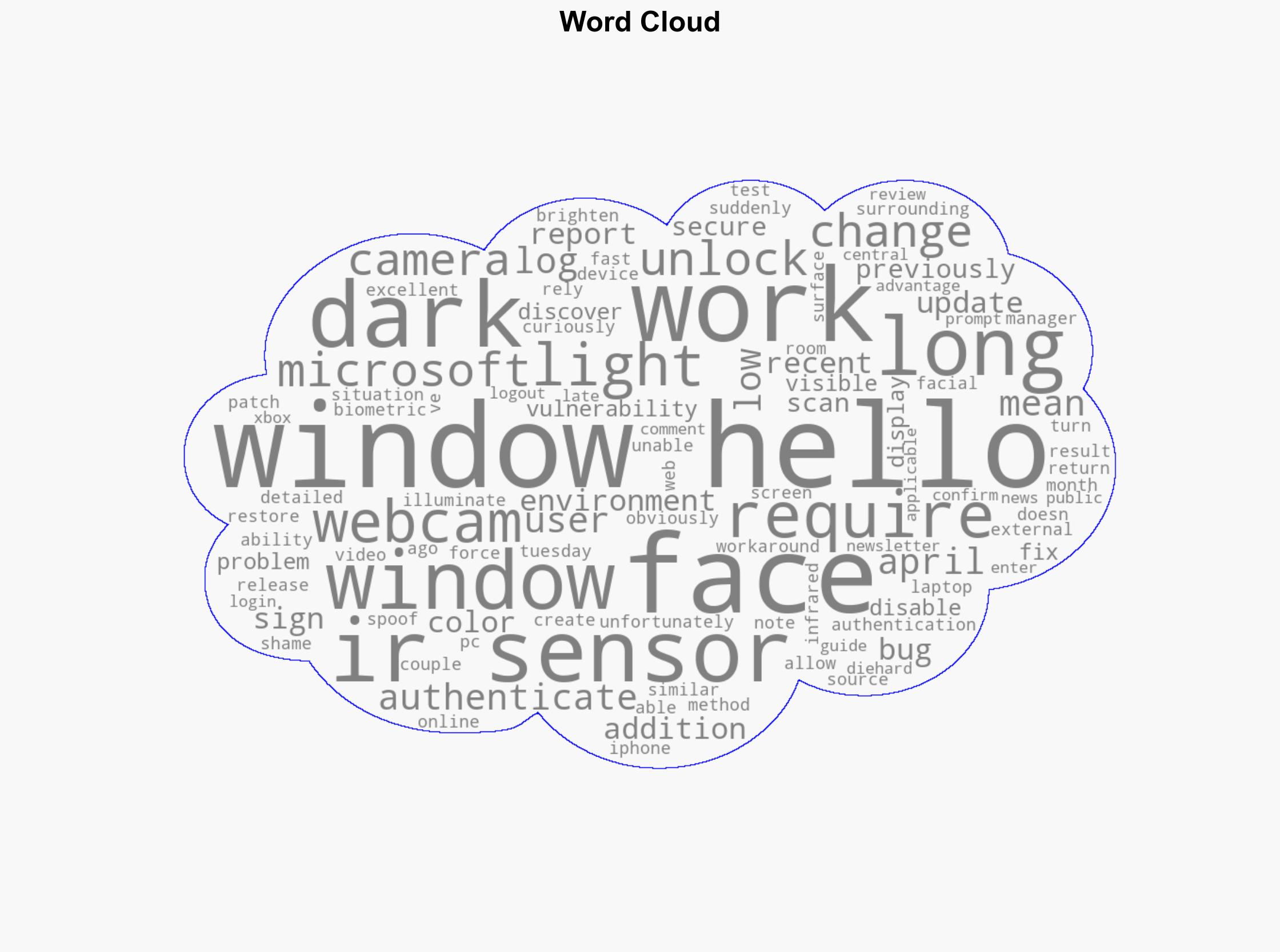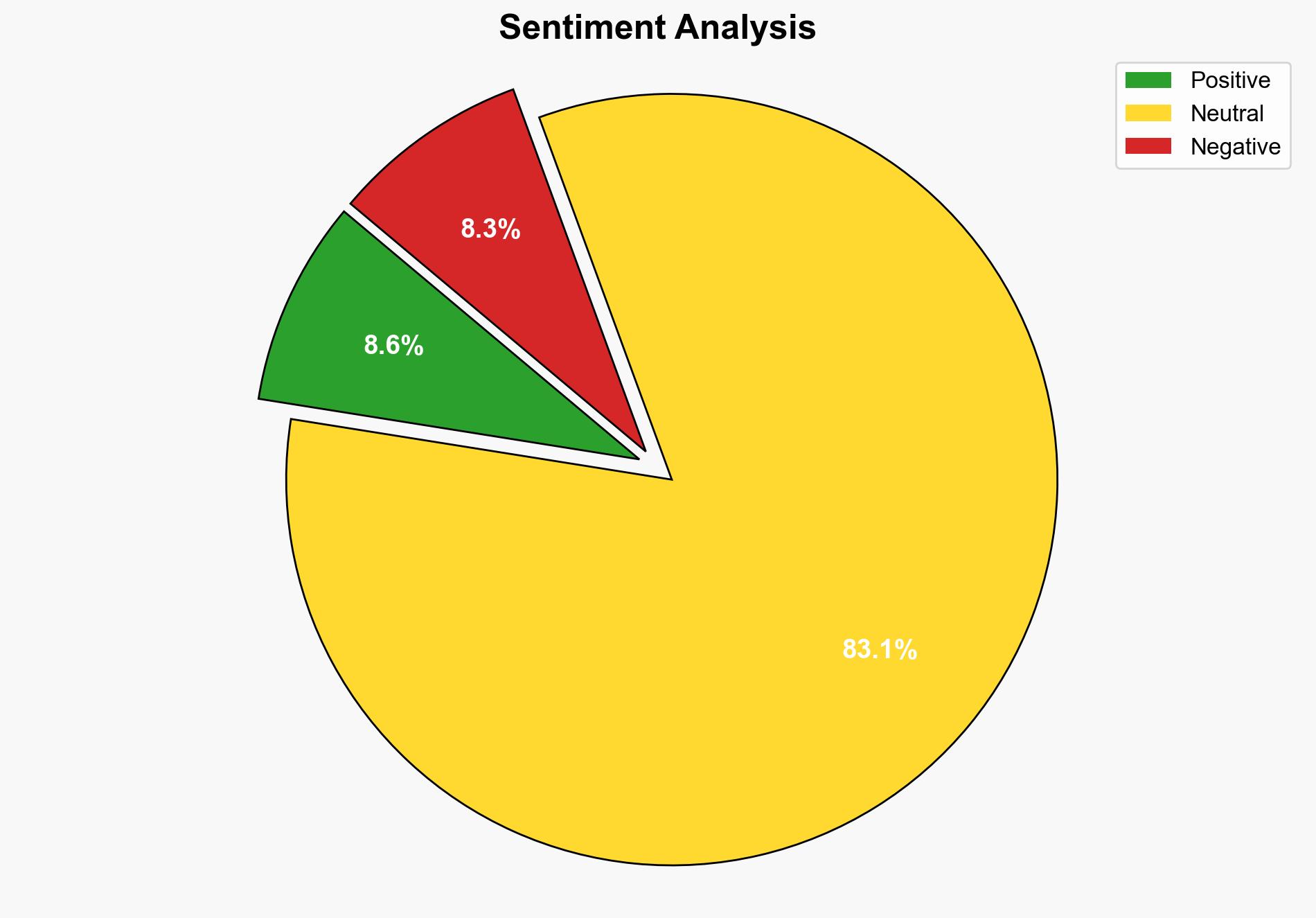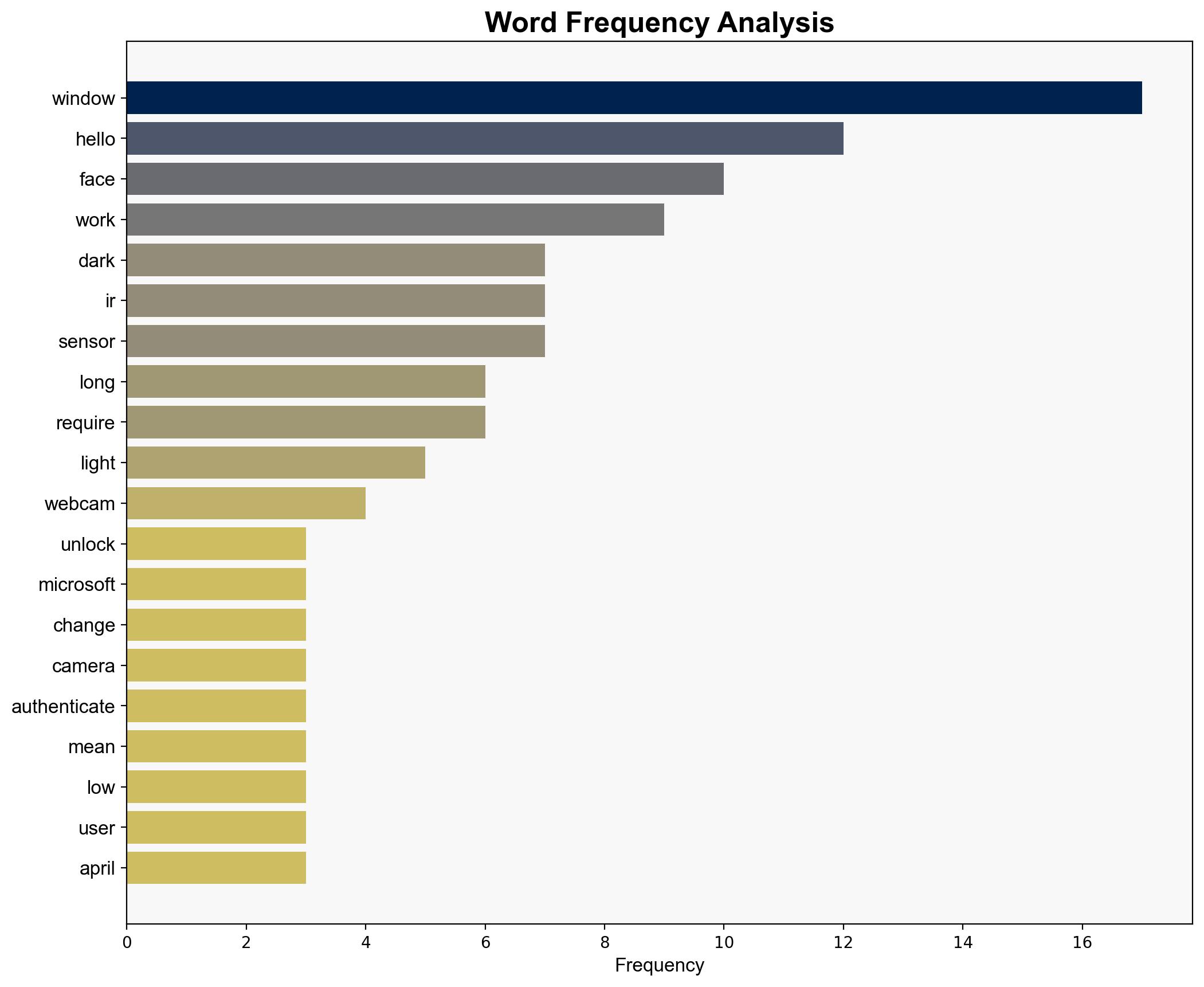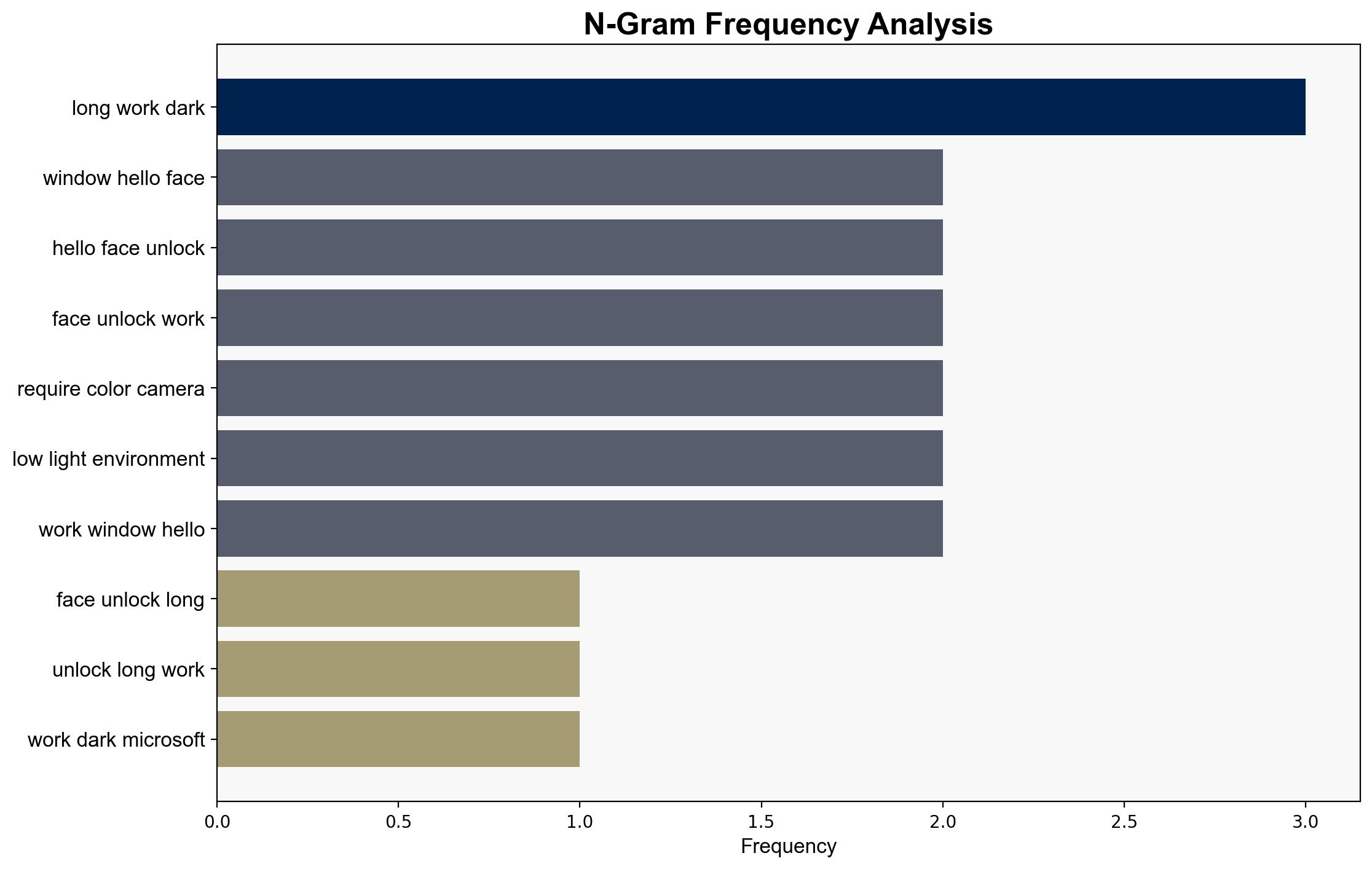Windows Hello face unlock no longer works in the dark and Microsoft says it’s not a bug – Windows Central
Published on: 2025-06-16
Intelligence Report: Windows Hello Face Unlock No Longer Works in the Dark and Microsoft Says It’s Not a Bug – Windows Central
1. BLUF (Bottom Line Up Front)
Recent updates to Windows Hello have altered its functionality, requiring both a color camera and an infrared (IR) sensor for facial authentication. This change, driven by security enhancements, means the system no longer works in low-light conditions. Microsoft asserts this is not a bug but a necessary adjustment to address a vulnerability. Users must adapt to these changes by ensuring adequate lighting or adjusting device settings.
2. Detailed Analysis
The following structured analytic techniques have been applied to ensure methodological consistency:
Adversarial Threat Simulation
By simulating potential cyber adversary actions, we anticipate that vulnerabilities in biometric authentication systems could be exploited if not properly secured. The update aims to mitigate such risks by enhancing authentication requirements.
Indicators Development
Monitoring for anomalies in system behavior post-update is crucial. Users should report any irregularities in authentication processes, which could indicate underlying security threats.
Bayesian Scenario Modeling
Probabilistic modeling suggests a reduced likelihood of spoofing attacks with the new dual-sensor requirement, though it introduces usability challenges in low-light scenarios.
3. Implications and Strategic Risks
The update highlights a trade-off between security and user convenience. While enhancing security against spoofing, it may reduce user satisfaction and productivity in low-light environments. This could lead to increased user frustration and potential workarounds that undermine security measures.
4. Recommendations and Outlook
- Encourage users to provide feedback on the update to refine future security measures without compromising usability.
- Develop and distribute guidelines for optimal device setup in various lighting conditions.
- Scenario Projections:
- Best Case: Users adapt quickly, and security enhancements prevent potential breaches.
- Worst Case: User dissatisfaction leads to decreased adoption of biometric security features.
- Most Likely: Gradual adaptation with ongoing feedback leading to iterative improvements.
5. Key Individuals and Entities
Microsoft
6. Thematic Tags
cybersecurity, biometric authentication, user experience, software updates





